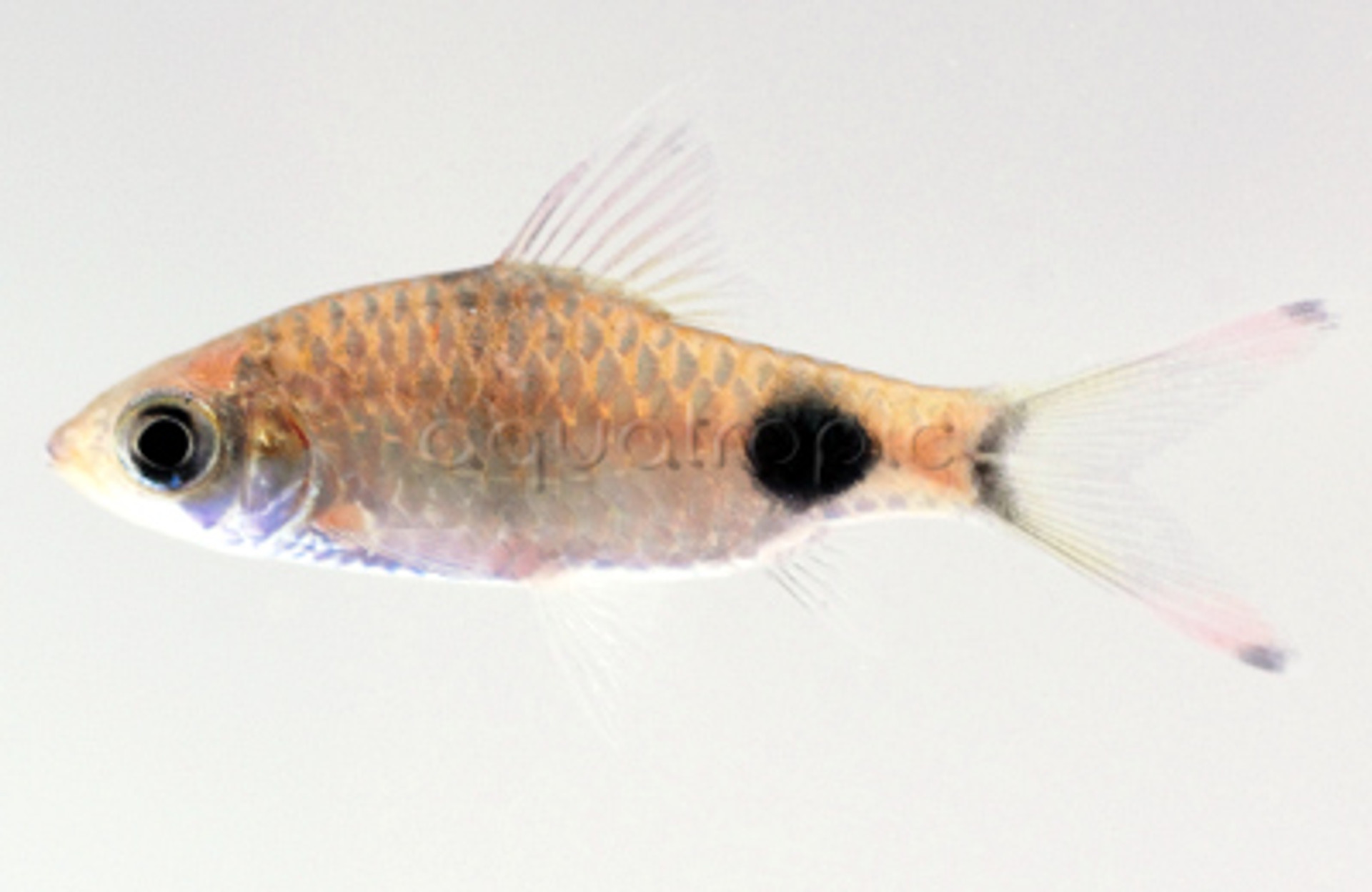Mascara Barb Dawkinsia assimilis

Of the many species of barb available to aquarists, few can rival the ostentatious beauty of Dawkinisia assimilis. Males of this fish, when fully flushed in their breeding regalia, feature an astounding patternation of reds along the snout and fins. The sides are set ablaze with a swooping red line that serves to separate the golden back from the silvery belly, while a large black spot prominently marks the caudal peduncle. These gaudy colors give the fish its common name of Mascara Barb, and it is, in a word, eye-catching.
In the wild, you’ll find this stately barb cruising about certain river drainages of Southwestern India, such as the Netravati, Chalakudy, and Kallada Rivers. Here it occurs in large schools, with males competing fiercely for the rather understated females. Like the peacock’s feathers, the brilliant hues of the male are an enticement—an advertisement to females that it is a robust and healthy fish worth breeding with.
In the confines of a home aquarium, a small group of a half-dozen or more is necessary to see this fish at its fullest. Captive-bred juveniles tend to be most commonly available for this species; however, at such a small they can be challenging to sex. An ideal sex ratio will feature two females for each male, and it becomes imperative that any aquarium housing mature males be large enough for their bickering to be diminished. With a maximum size nearing 5 inches, this necessitates a reasonably large tank measuring around 4 feet or more in length for these active swimmers.
Having been bred in captivity for some time now, any reasonably clean water will likely prove suitable, though it’s perhaps best to provide strong aeration and water flow through the use of powerheads. If fed a high-quality omnivorous diet, a group of Mascara Barbs can eventually be expected to spawn, and, with a little luck, it is even possible to see small fry develop without any direct intervention. With its large size and handsome good looks, Dawkinsia assimilis is a barb that every serious aquarist should attempt to keep at some point.